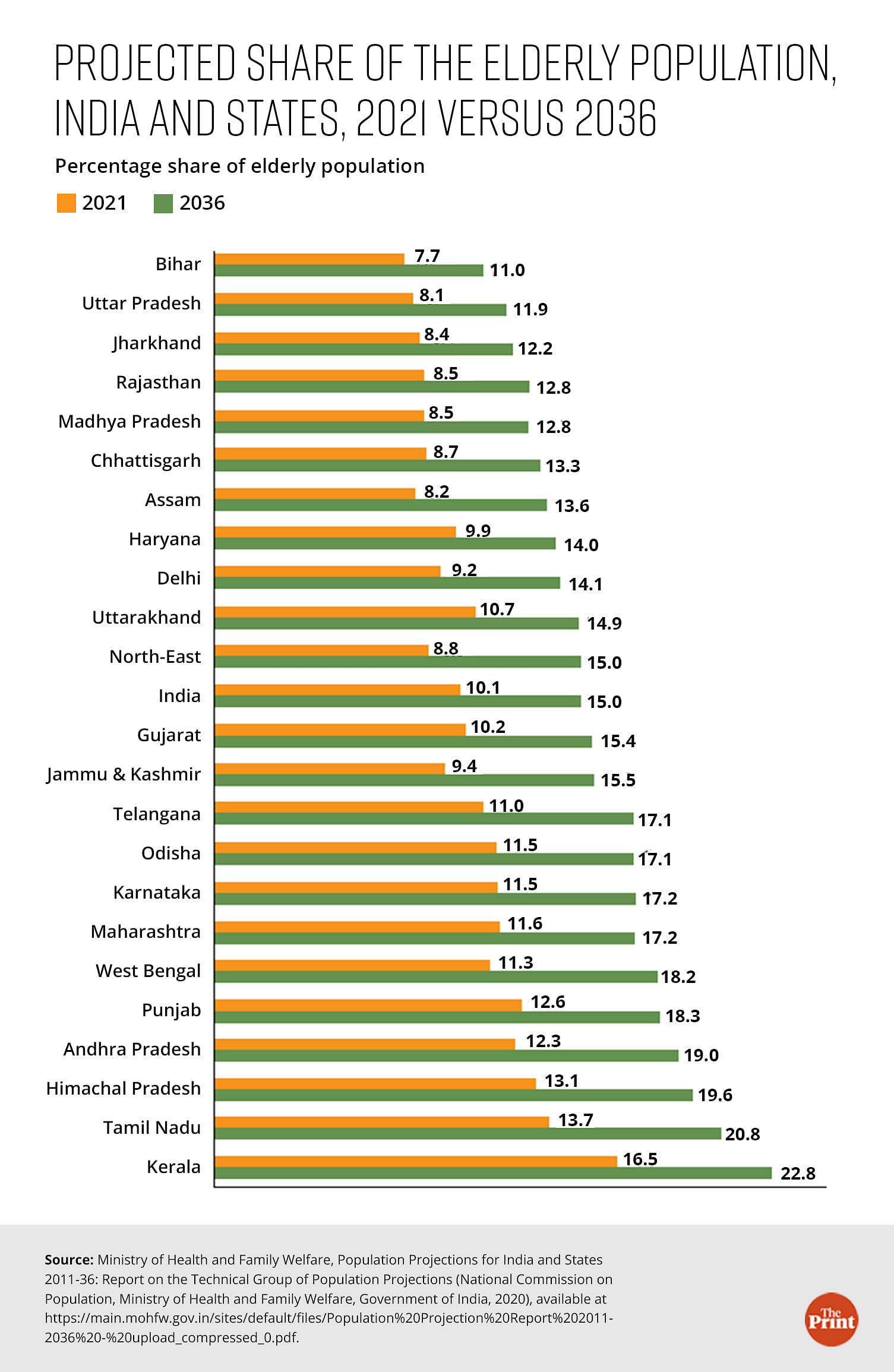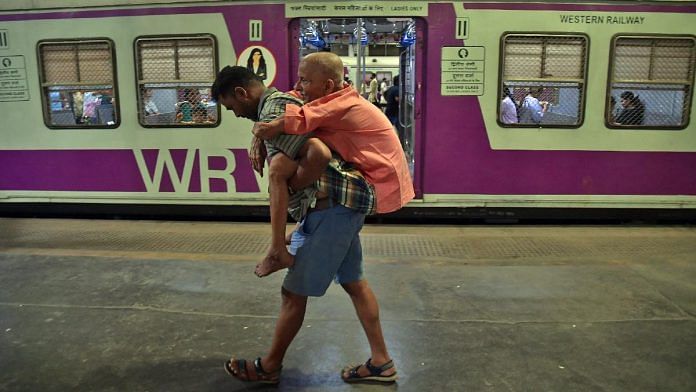New Delhi: Around the time India celebrates 100 years of Independence, the country’s elderly — those aged above 60 — are expected to comprise 20.8 percent of the population, twice that in 2022 (10.8 percent), according to the United Nations Population Fund (UNFPA)-India report released Wednesday.
According to the UNFPA’s ‘Caring for our elders: Institutional response-India Ageing Report 2023’, the population of the elderly is expected to be higher than that of children aged 0-14 years by 2046, while the share of 15-59-year-olds is projected to see a dip.
The share of the elderly population, the report says, would be substantial in most states in the coming decades. One in five people will be aged over 60 in the southern states by 2036, it adds.
The report has been prepared by UNFPA-India in collaboration with the International Institute for Population Sciences (IIPS), and seeks to analyse the living conditions and welfare of older individuals in India.
The assessment is based on secondary data from the IIPS’ Longitudinal Ageing Survey in India (LASI) 2017-18, Census of India, population projections by the Government of India (2011–2036), and the World Population Prospects 2022 by the UN Department of Economic and Social Affairs.
The report states that, between 2000 and 2022, the total population of India grew by 34 percent while that of the elderly grew by 103 percent. “Projections indicate that during 2022-2050, the overall population of India will grow by 18 percent only, while the older population will grow by 134 percent,” it adds.
Like the previous edition of the report — India Ageing Report 2017 — the 2023 analysis stresses three key challenges: women living longer than men, resulting in higher levels of widowhood and associated sociocultural and economic deprivations and dependencies, a high proportion of rural population among the elderly, and the ‘ageing of the aged’.
Speaking at the release of the report, Andrea M. Wojnar, UNFPA India representative and country director Bhutan, said the assessment shows that elderly women live longer than men.
They are a vulnerable lot, as they often face isolation and socioeconomic hurdles, she added.
“This comprehensive report is a valuable resource for scholars, policymakers, programme managers, and all stakeholders involved in elder care,” she said.
“Older persons have contributed significantly to society, and they deserve nothing less than our best efforts to ensure their well-being.”
Saurabh Garg, secretary for the Department of Social Justice under the Union Ministry of Social Justice and Empowerment, was also present at the release event and spoke about government efforts aimed at the elderly.
India’s Ageing Index
The report says southern states — Kerala, Tamil Nadu, Andhra Pradesh, Karnataka, Telangana — and select northern states such as Himachal Pradesh and Punjab reported a higher share of the elderly population than the national average of 10.1 percent in 2021.
This gap is expected to widen by 2036, it adds.
It says India’s ‘Ageing Index’, which is a measure of the number of elderly per 100 children in the population, was 39 in 2021. The figure was higher than the national average in states such as Tamil Nadu, Karnataka and Telangana, as well as in Gujarat and Maharashtra in the west.

“Compared to southern and western India, central and north-eastern regions have the younger group of states as indicated by the ageing index,” says the report.
The north-east has been analysed as a composite unit in the report and data for individual states is not given.
Among other findings, the report says life expectancy of women at 60 years is over 20 years in Rajasthan, Haryana, Gujarat, Uttarakhand, Kerala, Himachal Pradesh and the Union territory of Jammu and Kashmir.
This raises concerns about their social and economic well-being, it adds.
The UNFPA report recommends that geriatric care be improved, and the government come up with schemes and policies to address health, financial empowerment, and capacity-building needs of the elderly population, among other efforts.
‘Imperative to ensure access to care & support’
In his address at the release of the report, Saurabh Garg, secretary for the Department of Social Justice, said, “As India ages, it is imperative to ensure that our elderly population has access to the care and support they need to live healthy, dignified, and fulfilling lives.”
The government, he added, has “taken several measures and is exploring new initiatives to address the concerns of elderly people”.
Rohit Prasad, chief executive officer of the NGO HelpAge India, said efforts have to be made to address the key issues faced by elderly people.
“Some of the key needs include, source of income, shelter, healthcare etc. He said that close to 90 percent of the elderly people, especially in rural areas, are in the unorganised sector and don’t have a fixed source of income,” he added. “The majority have to earn to survive, as they don’t have any financial security.”
On the health front, Prasad said, the government is putting a lot of emphasis on primary healthcare. “But most of them suffer from chronic illnesses, which are not covered under insurance. We see that people suffer as they can’t get treatment done. The idea of palliative care is non-existent, except in a few states. On the health side, there are huge gaps in the system.”
(Edited by Sunanda Ranjan)
Also Read: India gets the ‘highest population’ tag. But its young can counter burden by being productive



